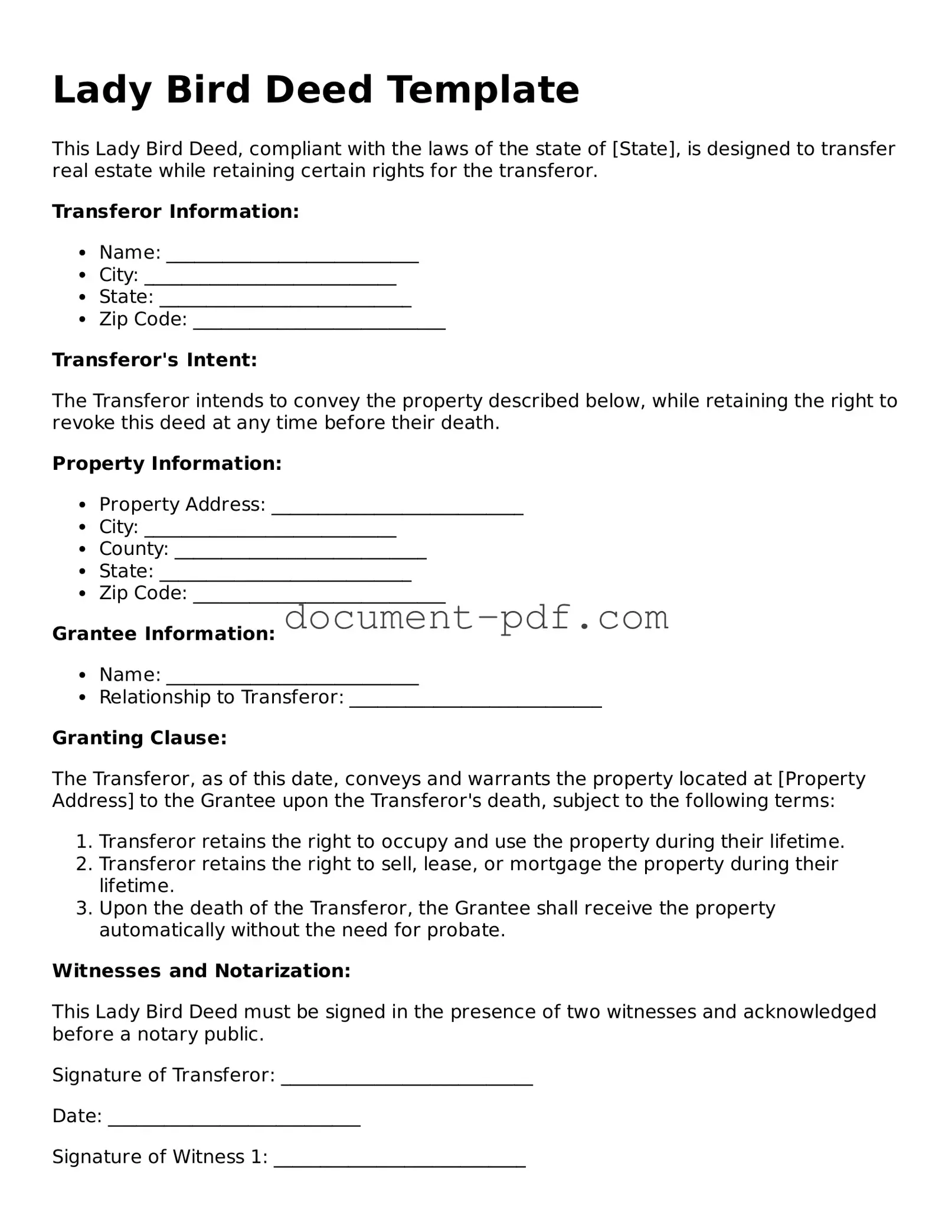Lady Bird Deed Template
This Lady Bird Deed, compliant with the laws of the state of [State], is designed to transfer real estate while retaining certain rights for the transferor.
Transferor Information:
- Name: ___________________________
- City: ___________________________
- State: ___________________________
- Zip Code: ___________________________
Transferor's Intent:
The Transferor intends to convey the property described below, while retaining the right to revoke this deed at any time before their death.
Property Information:
- Property Address: ___________________________
- City: ___________________________
- County: ___________________________
- State: ___________________________
- Zip Code: ___________________________
Grantee Information:
- Name: ___________________________
- Relationship to Transferor: ___________________________
Granting Clause:
The Transferor, as of this date, conveys and warrants the property located at [Property Address] to the Grantee upon the Transferor's death, subject to the following terms:
- Transferor retains the right to occupy and use the property during their lifetime.
- Transferor retains the right to sell, lease, or mortgage the property during their lifetime.
- Upon the death of the Transferor, the Grantee shall receive the property automatically without the need for probate.
Witnesses and Notarization:
This Lady Bird Deed must be signed in the presence of two witnesses and acknowledged before a notary public.
Signature of Transferor: ___________________________
Date: ___________________________
Signature of Witness 1: ___________________________
Date: ___________________________
Signature of Witness 2: ___________________________
Date: ___________________________
Notary Public Signature: ___________________________
Date: ___________________________
